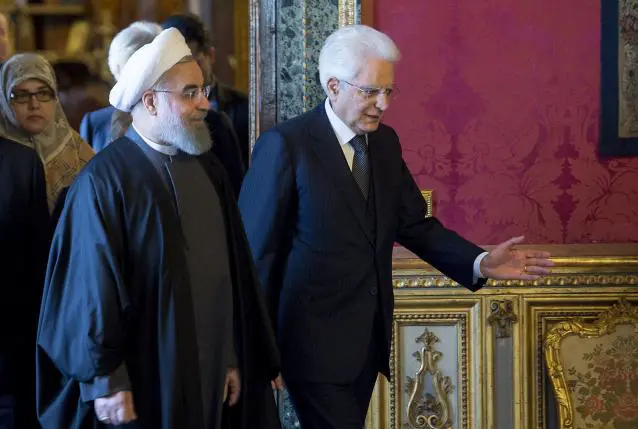The cover-up of nude statues at Rome' s Capitoline Museums during a two-day visit by Iranian President Hassan Rouhani has turned into a mysterious blame game in Italy.
Earlier this week, local media published the images of some classic statues covered by large white boxes to shield their private parts, apparently as a form of respect for visiting Iranians. The cover-up of nude statues was allegedly agreed between the Iranian delegation and the Italian authorities.
The issue sparked debate and made the headlines in Italy. But Culture Minister Dario Franceschini, who accompanied the Iranian delegation on a visit to the Colosseum on Wednesday, said that he had not been informed of the decision.
"Neither Prime Minister Matteo Renzi nor me had been informed of the choice to cover the statues," Franceschini said in a television interview. "I think other ways could easily have been found to avoid going against the sensibility of such an important foreign guest, without this incomprehensible decision to cover the statues," he added.
Asked about the same issue, Rouhani told a press conference that there had been no talks about the statues. "All I can say is that Italians are very hospitable, they try to do everything to put guests at ease and I thank them for this," he said.
The most ancient publicly owned museum in the world whose creation traces back to 1471, the Capitoline Museums contain a number of nude statues, such as the marble "Capitoline Venus." The statue, which features Venus-Aphrodite coming out of her bath, was among the covered ones.
Rome's Culture Superintendency, a technical office under the Rome municipality which manages the cultural heritage of the Italian capital, said that it was not behind the move, according to ANSA news agency.
"We have nothing to say as we have absolutely nothing to do with this issue," the Rome municipality press office confirmed to Xinhua.
Meanwhile, the prime minister's office announced later on Wednesday that it has opened an internal investigation to ascertain responsibilities in the organization of the Rouhani visit to the Capitoline Museums.
Heated discussion continued in Italy while the Italians wait for an outcome. Some influential experts believe it was a wrong decision, regardless who took it.
The move could have made sense if it had been about modern nude images in cinema or advertisement, but historic heritage is something different and respected by everybody in the world, according to art critic Vittorio Sgarbi. "By doing so, Italians have appeared ridiculous," he wrote in an article published by Il Giornale newspaper.
A geopolitical analyst of Iranian origin, Nima Baheli, said it appeared there were no requests from the Iranian delegation about the nude statues. "Moreover, if you go to Iran you will see that there are various museums where nude statues or paintings are also on display ... so this issue is quite strange," he commented in an interview with Rai state television.
 简体中文
简体中文

